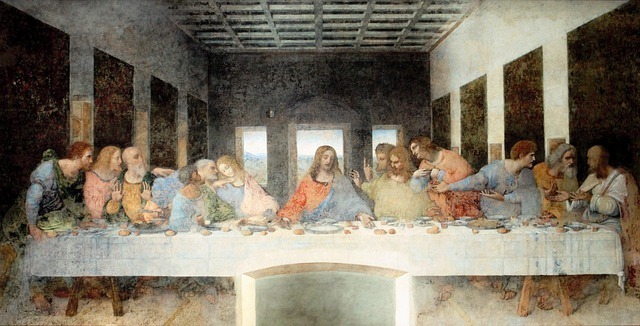Leonardo da Vinci is considered one of the greatest polymaths of all time. He dealt with subjects such as mathematics, architecture, anatomy and music – to name but a few!
Inhaltsverzeichnis
Who was Leonardo da Vinci?
Leonardo da Vinci was an Italian artist, inventor and scientist of the Middle Ages. He is considered one of the most important representatives of the Renaissance. Leonardo da Vinci was born on 15 April 1452 in Anchiano near Vinci in Tuscany. His father was Ser Piero da Vinci, a notary clerk, and his mother Caterina, a peasant maid. As Leonardo was merely an illegitimate child, he could not follow his father’s career and had to devote himself to arts and crafts instead. At the age of 15, Leonardo entered the workshop of the Florentine painter Andrea del Verrocchio, where he learned not only painting but also the art of gold and silversmithing and the teaching of anatomy and perspective. Already at this time, Leonardo developed an unusually great zeal for research and experimentation. For example, he is said to have used a parachute made of wool to test whether it was possible to bring the human body gently to the ground. Other inventions, such as a kind of device for inflating rubber balls or a clockwork with moving figures, can also be traced back to him. In 1482, Leonardo da Vinci was brought to Milan by Duke Ludovico Sforza to help design the fortifications and decorate the duke’s castles with frescoes and sculptures. In the years that followed, Leonardo’s most famous paintings included “The Last Supper” and the “Mona Lisa”, today the most famous painting in the world. in 1513 Leonardo da Vinci returned to Florence and from then on was in the service of the Grand Duke Cosimo I de’ Medici. It was at this time that he produced many of his famous drawings and studies, among others on the subject of flight mechanics or water pumps. Leonardo da Vinci finally died at the age of 67 on 2 May 1519 in Amboise in France.
What made him so special?
There are many factors that make Leonardo da Vinci special. First of all, he was an outstanding artist whose works are still admired today. But Leonardo was more than just an artist – he was also a brilliant inventor and scientist. Some of his inventions, such as the helicopter or the submersible, were centuries ahead of their time. Others, such as the drawing technique of perspective, changed art forever. But what really made Leonardo da Vinci so special? Part of his genius was certainly innate. Leonardo had an extraordinary memory and an incredible attention to detail. He was better at remembering things and retaining them longer than other people – a quality that served him well in his research and inventions. But Leonardo was also a hard worker who never stopped learning new things. He studied mathematics, anatomy, physics and many other subjects to deepen his knowledge. Through his curiosity and diligence, he managed to invent and discover many things that were unknown to other people at the time. In summary, Leonardo da Vinci was an extraordinary person – both innate genius and hard work made him the great artist, inventor and scientist we know today.
How did he change the world?
He is one of the most famous and revered artists and inventors of all time: Leonardo da Vinci. In his home country of Italy, he is still considered a national hero and is regarded by many as the epitome of the universal genius par excellence. But what made him so famous? How did he change the world? First of all, Leonardo da Vinci is best known for his works of art, which are still among the most popular and well-known paintings in the world. Who does not know the painting of the Mona Lisa or the Last Supper? Yet Leonardo was not just a painter, but also experimented with other art forms such as architecture, mechanics and music. His curiosity and tireless thirst for research helped him become the universal genius we know him as today. But Leonardo da Vinci did not only leave his mark on art. He was also an absolute expert in the fields of mathematics, physics, anatomy, geology and botany and discovered countless new things. For example, his studies on mechanics are considered the precursor of modern mechanical engineering. He also discovered that blood flows in veins – long before there was any proof of this! In short, Leonardo da Vinci was a man who changed the world significantly – both artistically and scientifically.
Conclusion
Leonardo da Vinci is a remarkable man, and his achievements remain undisputed. In many ways, he can be said to have been far ahead of the curve, enriching the world in the fields of painting, architecture, anatomy and more. His quest for knowledge as well as his creativity and curiosity were contagious and motivated others to explore the subject as well. Leonardo da Vinci was a genius and his works speak for themselves.
